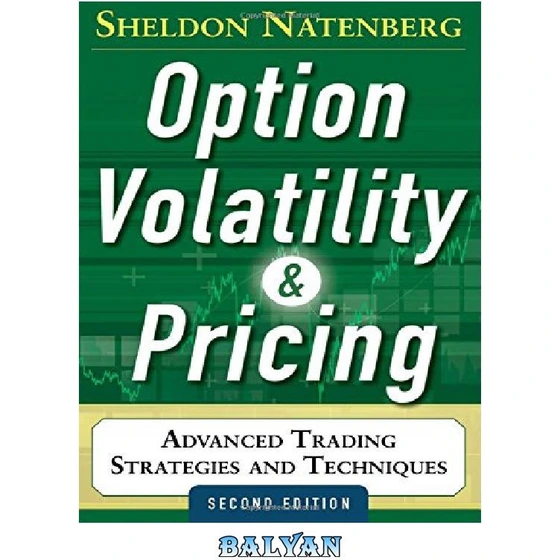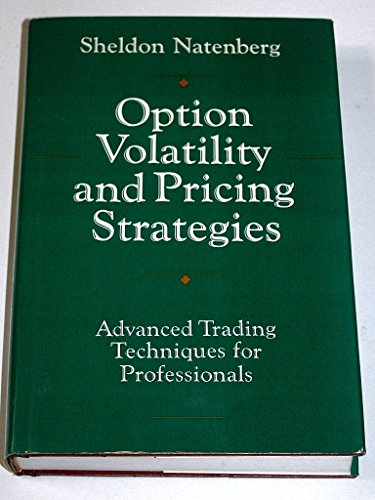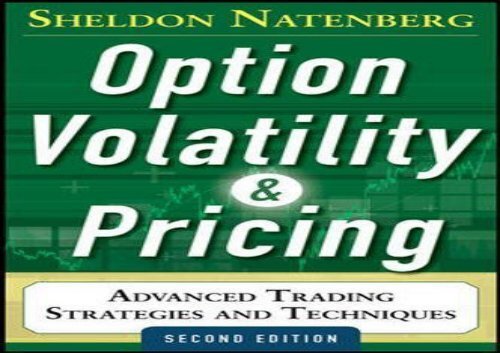Option Volatility And Pricing: Advanced Trading Strategies And Techniques

Imagine a bustling trading floor, screens flashing a kaleidoscope of numbers and charts. The air crackles with a nervous energy as traders, their eyes glued to the data, decipher the subtle dance of implied volatility. They’re not just buying or selling stocks; they're navigating the complex world of options, using advanced strategies to capitalize on the market's ever-shifting expectations.
This article delves into the sophisticated realm of option volatility and pricing, exploring the advanced trading strategies and techniques employed by seasoned professionals. It's a journey beyond basic calls and puts, into the intricate world of volatility smiles, skews, and the art of managing risk while seeking profit. We’ll unpack the tools and concepts that empower traders to make informed decisions in this dynamic market.
Understanding Option Volatility
At its core, option pricing revolves around volatility. Volatility, in this context, isn't just about how much a stock price moves, but rather the *expected* movement over a specific period.
This expectation is reflected in implied volatility (IV), a key ingredient in option pricing models like the Black-Scholes model. The higher the IV, the more expensive the option, reflecting the market's anticipation of significant price swings.
The Significance of Volatility
Volatility is more than just a number; it's a sentiment indicator. High volatility often signals uncertainty and fear, while low volatility can indicate complacency.
Savvy traders use volatility as a tool to gauge market conditions and identify potential opportunities. Understanding these nuances is crucial for implementing advanced strategies.
Advanced Trading Strategies
Moving beyond basic option buying and selling, experienced traders employ a range of sophisticated strategies. These strategies aim to profit from specific volatility scenarios, price movements, or time decay.
Volatility Arbitrage
One popular approach is volatility arbitrage, which involves exploiting discrepancies between implied volatility and realized volatility (the actual movement of the underlying asset). This could involve strategies like selling options when implied volatility is high (expecting it to decrease) and buying options when it is low (expecting it to increase).
Delta Neutral Trading
Delta neutral trading is another advanced technique. Delta measures an option's sensitivity to changes in the price of the underlying asset.
By constructing a portfolio with a net delta of zero, traders can theoretically insulate themselves from small price movements, focusing instead on profiting from changes in volatility or time decay. This often involves dynamically hedging the portfolio as the underlying asset's price fluctuates.
Calendar Spreads
Calendar spreads involve buying and selling options with the same strike price but different expiration dates. Traders use calendar spreads to capitalize on the time decay of options and to profit from anticipated changes in volatility in the future.
For example, a trader might sell a near-term option and buy a longer-term option, hoping to profit from the near-term option's faster time decay or an increase in volatility that would benefit the longer-term option.
Iron Condors and Butterflies
Iron condors and butterflies are more complex strategies that involve multiple options with different strike prices. These strategies are designed to profit from a narrow trading range in the underlying asset.
An iron condor involves selling out-of-the-money calls and puts and buying further out-of-the-money calls and puts to limit potential losses. The butterfly spread also profit from limited movement in the underlying, but they use only calls or puts.
Tools and Techniques for Volatility Analysis
Successfully navigating the world of option volatility requires more than just strategy; it demands a solid understanding of analytical tools and techniques.
The Volatility Smile and Skew
The volatility smile and volatility skew are graphical representations of implied volatility across different strike prices for options with the same expiration date. The smile is characterized by higher implied volatility for out-of-the-money options, while a skew occurs when either calls or puts have systematically higher implied volatility.
These patterns can provide valuable insights into market sentiment and potential future price movements. Understanding them can help traders fine-tune their strategies and identify mispriced options.
Greeks
Beyond delta, other "Greeks" play a critical role in option trading. Gamma measures the rate of change of delta, theta measures the time decay of an option, and vega measures the sensitivity of an option's price to changes in volatility.
By understanding and managing these Greeks, traders can gain a deeper understanding of their portfolio's risk profile and make more informed decisions. For example, a portfolio with high negative vega would be negatively impacted by a decrease in volatility.
Volatility Indices (VIX)
The CBOE Volatility Index (VIX), often referred to as the "fear gauge," is a real-time index that represents the market's expectation of 30-day volatility. It is derived from the prices of S&P 500 index options.
Traders use the VIX as a broad indicator of market risk and to gauge the potential for future price swings. A high VIX generally suggests greater uncertainty and potential for volatility.
Risk Management is Paramount
While the potential rewards of advanced option trading strategies are significant, so are the risks. Risk management is absolutely critical to protect capital.
Implementing stop-loss orders, diversifying positions, and carefully monitoring portfolio Greeks are essential practices. No strategy guarantees profits, and even the most experienced traders experience losses.
Position Sizing
Proper position sizing is one of the most crucial elements of risk management. Traders must carefully determine the appropriate amount of capital to allocate to each trade, taking into account their risk tolerance and the potential downside of the strategy.
Over-leveraging positions can lead to devastating losses, while under-leveraging may limit potential profits. Finding the right balance is key.
The Human Element
In a world dominated by algorithms and high-frequency trading, it's easy to overlook the human element. But even the most sophisticated models are ultimately guided by human decisions.
Discipline, patience, and a willingness to learn are essential qualities for success in option trading. Emotional control is crucial in navigating the inevitable ups and downs of the market.
Conclusion
Option volatility and pricing represents a challenging but potentially rewarding area of finance. By understanding the underlying principles, mastering advanced strategies, and employing sound risk management practices, traders can navigate this complex landscape and seek opportunities.
However, it is essential to remember that option trading involves significant risk and is not suitable for all investors. Continuous learning and adaptation are essential for long-term success.
![Option Volatility And Pricing: Advanced Trading Strategies And Techniques [PDF] Download Option Volatility and Pricing Advanced Trading](https://www.yumpu.com/en/image/facebook/65430218.jpg)

















